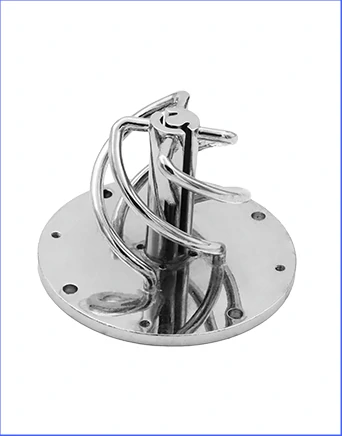Time to read: 6 min

Delrin, a type of Polyoxymethylene (POM), has emerged as a lightweight polymer with properties rivaling metals in tensile strength and rigidity. This article delves into Delrin's types, advantages, disadvantages, and applications in product manufacturing.
In the realm of product manufacturing, metals have long been favored for their high tensile strength and rigidity. However, with technological advancements, lightweight polymers like Delrin have become a popular alternative.
What is Delrin Material?
Delrin, also known as Polyoxymethylene (POM) or acetal, is an engineering thermoplastic used for manufacturing high-strength, stiff, and stable plastic parts. It is a wear-resistant, semi-crystalline thermoplastic suitable for various machining processes and is often used to replace metal components.
Types of Delrin Material
Delrin comes in two main types, each with distinct properties and applications:
- Delrin Copolymer: Designed for exceptional wear resistance, offering high mechanical properties like stiffness and dimensional stability.
- Homopolymer Grades: Tailored for electrical and mechanical applications, with high creep resistance and stress and strain resistance.
Features of Delrin Material
Delrin's properties make it an ideal material for manufacturing plastic parts and a perfect alternative to metal and plastic in part production:
- Repeated impact resistance
- High mechanical strength and durability
- Creep resistance
- Low moisture absorption
- Resistance to solvents and organic chemicals
- Low friction coefficient
- Stability in low temperatures
- Good shock resistance
Application of Delrin
Delrin's high wear resistance and low friction coefficient make it a preferred material in various industries, including automotive and medical. It is used in the production of:
- Safety restraint components
- Sliding and guiding parts
- Gears
- Door system components
- Medical delivery devices
Advantages and Disadvantages of Machining Delrin Material
Delrin offers several advantages as a manufacturing material, but it also has some limitations.
Advantages of Machining Delrin Material
- Low Weight: Despite its lightweight, Delrin has high tensile strength.
- Machinability: Easy to work with using conventional or advanced machinery.
- Strength: Fatigue-resistant with high mechanical strength.
- Low Friction Coefficient: Ideal for maintenance-free sliding and moving parts.
- High Strain and Stress Capacity: Excellent for snap-fit and buckle applications.
- Moisture Resistant: Suitable for humid conditions and resistant to corrosion.
Disadvantages of Using Delrin in Manufacturing
- Poor Acid Resistance: Susceptible to damage from certain acids.
- Food Storage: Not ideal for food storage containers due to reactions with acidic food.
- Poor Adhesion: Difficult to bond, requiring specialized adhesives.
- Flammable: Requires specific fire extinguishing methods.
How To Improve Your Delrin Machining Process
Machining Delrin requires precision and expertise. The following tips can help improve the Delrin machining process:
- Use Delrin when physical properties and dimensional stability are crucial in humid environments.
- Avoid using Delrin in strongly acidic or basic environments, at temperatures above 90°C, or where it would interact with acidic industrial fuels.
FAQs
- Best Grade of Delrin: Depends on the project type and customer specifications.
- Types of Delrin: Available as Delrin copolymer and homopolymer, each with unique properties.
Conclusion
Delrin's numerous advantages have led to its widespread adoption in various industrial processes. At UnoFactory, we provide product design guidance and Delrin machining processes to help you optimize your project. Our team of experts ensures top-notch services, cost reduction, and durable product delivery.




